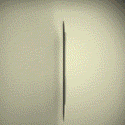
Audiences will once again become part of Ariel’s world when The Little Mermaid, a live-action reimagining of the studio’s Oscar-winning animated musical classic, swims into theaters today.
Directed and produced by visionary filmmaker Rob Marshall, Disney’s The Little Mermaid is an intimate story set against an epic backdrop—including a stunning, photorealistic world under the sea. Ambitious in scale but grounded in reality, the film stars Halle Bailey as Ariel, a spirited mermaid with a beautiful voice and a thirst for adventure—one that will take her above the surface to another world, inhabited by humans.
“There are two different worlds in our story: the above world, which is the very real world, and the underwater world, which is our magical world where mermaids exist, crabs sing, and diving birds like Scuttle speak,” Marshall says. “The underwater world is entirely digital, and above the water, everything is real and constructed in the way a classic period film is.”

Because visual effects supervisor Tim Burke had to digitally create the underwater scenes in post-production, each one needed to be mapped out in advance. “We started by doing pre-vis animation that calculated and designed and created the entire way that the scenes would play out,” executive producer and unit production manager Jeffrey Silver explains, “and then we looked at every shot to decide how it could best be accomplished.”
Ultimately, the filmmakers opted for a “dry-for-wet” approach, in which the actors would film their underwater scenes on land in a blue-screen environment, utilizing a series of state-of-the-art rigs that included wires, teeter-totters, and tuning forks. The actors were often hooked into a harness with a counterweight on the backside that would simulate movement underwater. “Everything had to be choreographed very specifically with a large team of stuntmen and women, who helped maneuver our characters around,” Marshall says.
To help support the dry-for-wet approach, The Little Mermaid’s director of photography, Dion Beebe, decided he would need to design complex lighting effects to simulate the appearance of being underwater. “My gaffer and I created water trays for theatrical moving lights that we could suspend above the sets, through which light could be projected,” he explains. “We then had our SFX team build a stirring apparatus to disturb the water and create the caustic lighting we wanted for sequences that were beneath the ocean surface.”

REELated:
Silver adds, “Water caustics are usually done through reflection, through mylar, but Dion designed the most organic method of creating underwater lighting that I’ve ever seen, which translates to film very well.” Marshall says he was thrilled with Beebe’s “brilliant” artistry, saying, “He understands the subtlety of light and movement in a way that few do. His approach for the underwater work was to understand the actual depth of the water for each scene and then paint with color and shadow to achieve a photorealistic world.”
Meanwhile, production designer John Myhre and the art department were spending countless hours researching and reviewing nautical footage, documentaries, and still images of actual underwater worlds, which would ultimately influence the aesthetic of each underwater set.
Each has its own design scheme, with subtly different color palettes and tones—from the lighter blue of the ocean’s surface near Ariel’s grotto to the dark purple tones that conceal Ursula’s sinister world in the ocean’s depths. King Triton’s underwater kingdom was designed with a jewel-tone-like color palette inspired by real corals and anemones.
Myhre designed it to resemble a busy city, with a nod to the 1930s Manhattan skyline, where everything was made from beautiful, oversized coral pillars, anemones, reefs, and other materials. “We didn’t want it to look like a manmade or futuristic kingdom, but to feel like it actually comes from something very real,” Myhre explains. “We wanted to try and keep it as natural as possible, so everything underwater actually comes from the sea.”
That, Marshall says, was the key to reimagining The Little Mermaid for live-action. “Even though it’s a magical world that we created, our goal was to not let it look animated in any way. We wanted to reimagine our underwater space in a photorealistic style so that it would come to life in a live-action way,” the director says. “That was really important to us.”
(NOTE: This first appeared on The Walt Disney Company site.)










